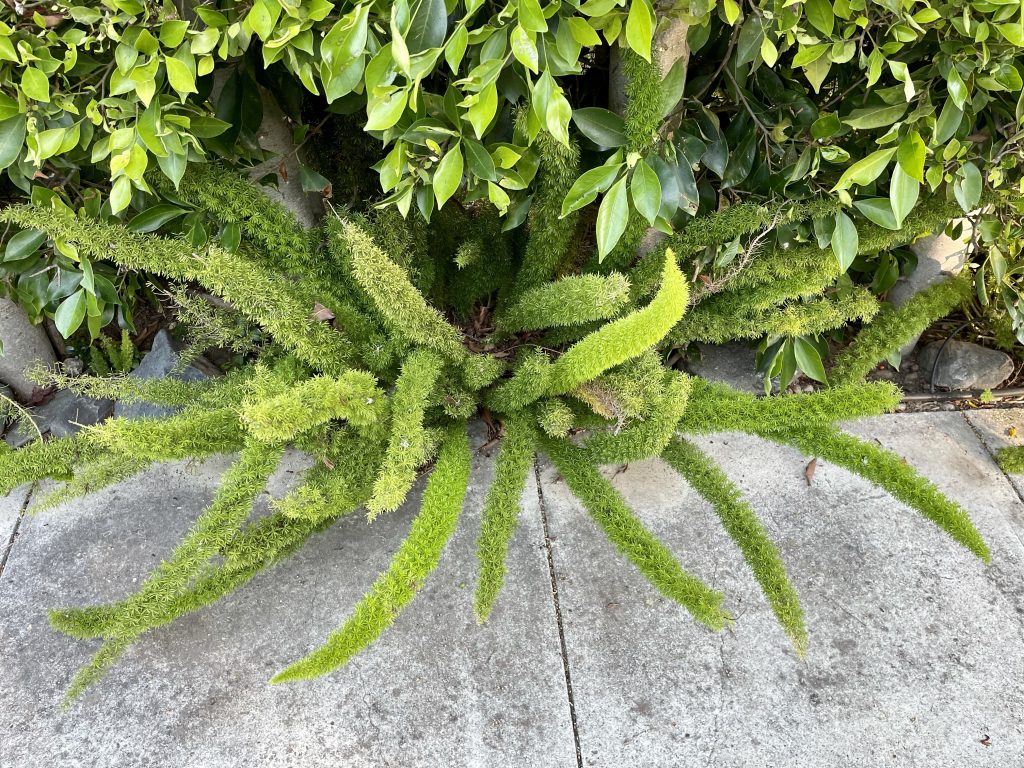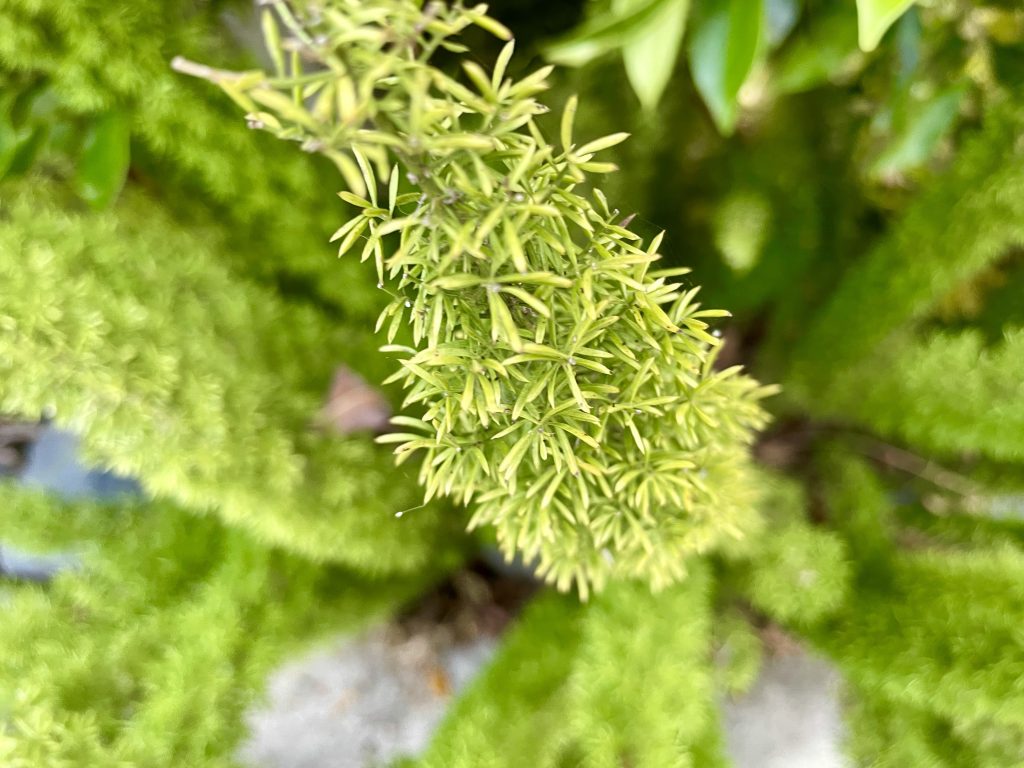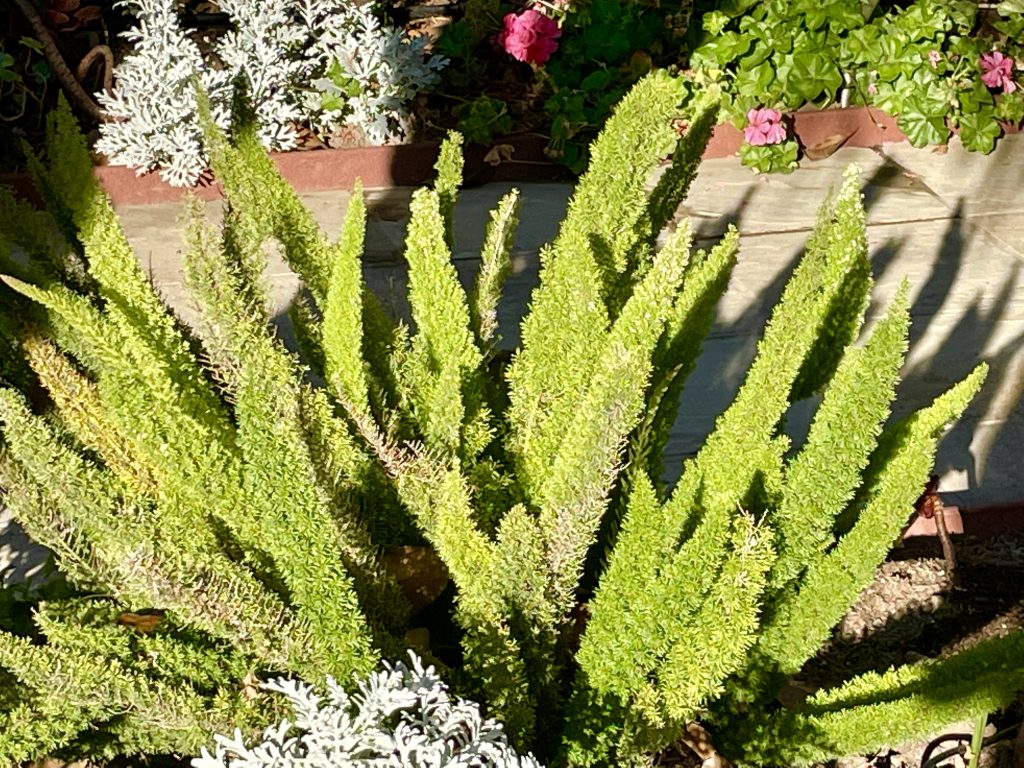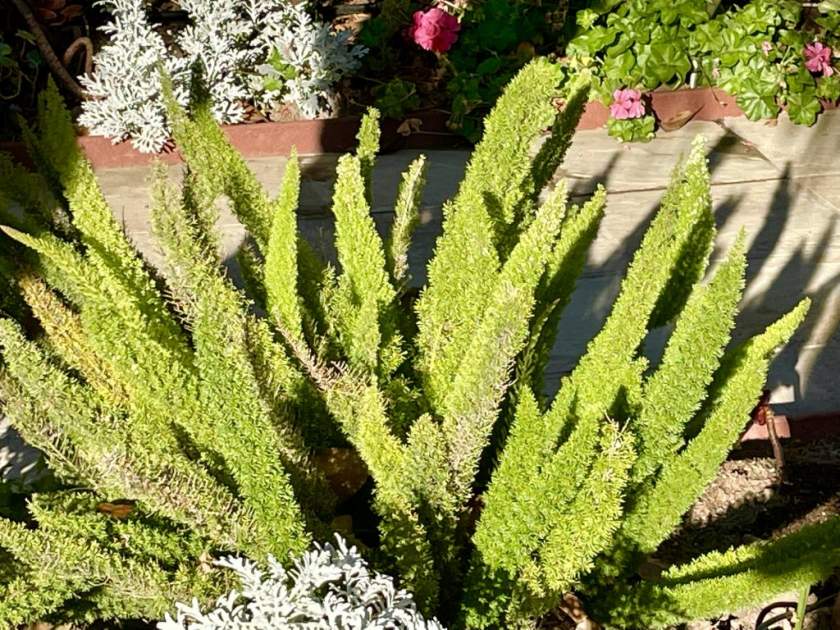Asparagus densiflorus is a perennial plant from the Asparagaceae family, native to southern Africa, spanning from Mozambique to South Africa. This versatile plant is known by various names such as Asparagopsis densiflora, Protasparagus densiflorus, Asparagus Fern, Emerald Feather, Racemose Asparagus, Shatavari, Lace Fern, Plumosa Fern, Plume Asparagus, or Foxtail Fern.
The specific epithet “densiflorus” refers to its dense flowering habit. Asparagus densiflorus features delicate, fern-like leaves that are alternate and needle-like in appearance. The flowers are bell-shaped and white, emerging from the axils of the leaves. Following the flowering period, green berries develop, which eventually turn red in autumn, adding a touch of color to the plant. In terms of size, Asparagus densiflorus typically reaches a height of about 2ft or 60cm, although it can spread up to 4ft or 1.2m wide, creating an elegant and lush presence.

How to grow Asparagus densiflorus:
When cultivating Asparagus densiflorus, the approach may vary depending on the climate. In temperate zones, it can be grown outdoors as a garden plant, while in other regions, it is commonly kept as a houseplant in containers.
To ensure healthy growth, it is recommended to plant Asparagus densiflorus in organically rich, moist, and well-drained soil. The soil should retain adequate moisture without becoming waterlogged. When selecting a location, partial shade is ideal, particularly in avoiding the intense afternoon sun. While Asparagus densiflorus can tolerate full shade, it’s important to note that the leaves may appear lighter in color under such conditions.
Watering should be adjusted according to the season. During the winter months, it is advisable to reduce the frequency of watering, allowing the soil to dry out slightly between waterings. However, in warmer periods, regular watering to maintain soil moisture is essential for the plant’s vitality.
Asparagus densiflorus can be propagated through seeds or division. If propagating through seeds, sow them in a controlled environment, providing the necessary warmth and humidity for germination. Alternatively, the plant can be divided by separating the root clumps into smaller sections, ensuring that each division possesses a portion of the rhizome and foliage.

Pruning can be beneficial for Asparagus densiflorus as it encourages new growth. Trimming back any yellowed or damaged foliage helps maintain the plant’s overall appearance and vitality. However, exercise caution while pruning to avoid harming the delicate foliage.
It’s worth noting that Asparagus densiflorus has been classified as an invasive species in certain regions, including Australia and parts of the United States. As a responsible gardener, it is important to prevent the plant from spreading into natural areas where it may outcompete native species.
While generally trouble-free, it is advisable to keep an eye out for common pests such as slugs, mites, mealybugs, and aphids. Regular inspections of the foliage and appropriate pest management practices will help ensure the plant’s health and beauty.
By following these guidelines, you can enjoy the graceful presence of Asparagus densiflorus, whether as an outdoor garden specimen or as an elegant houseplant.





